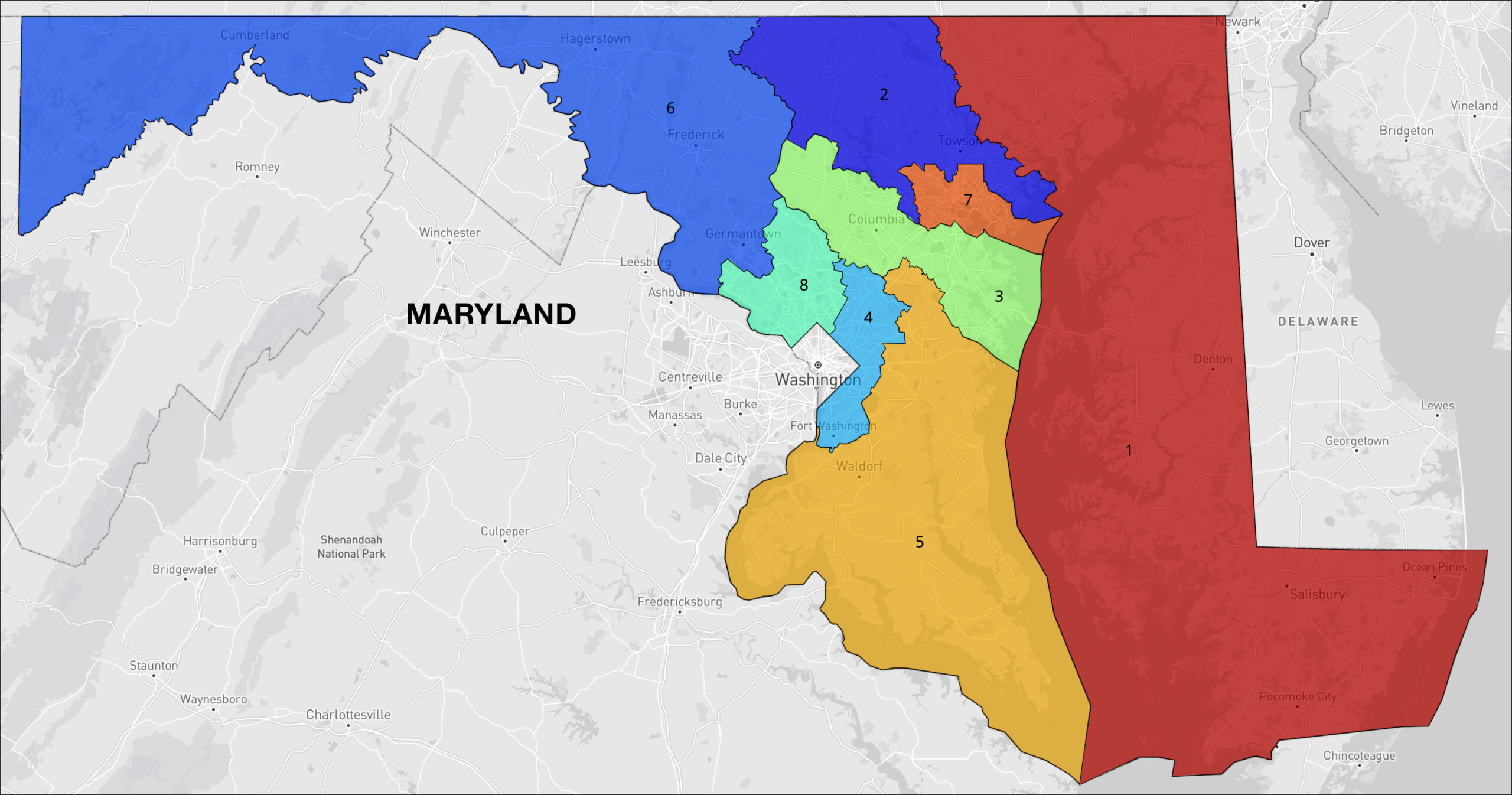
Ohio Congressional redistricting map. Click on image or here to see interactive version on Dave’s Redistricing App.
By Jim Ellis — Friday, Nov. 14, 2025
Redistricting
Ohio’s unique redistricting process ended as quickly as it began.
The Buckeye State’s seven-member redistricting commission, which is comprised of elected officials from both parties and includes Gov. Mike DeWine (R), unanimously passed a new congressional map. The act of the commissioners reaching a bipartisan consensus vote means the map becomes law and does not go to the legislature for approval. The plan will now stand for the remainder of the decade.
Ohio voters previously adopted changes to the redistricting process that created the state’s unusual elected officials commission (other commission states typically have citizen members), which involves the legislature if the bipartisan panel cannot unanimously agree.
If the commissioners reached an impasse, the plan would advance to the legislature where a three-fifths vote of each house would be required to enact a map for the entire decade. Passing a plan with majority support, but short of a three-fifths tally, means the district configuration could only stand for two elections. Such was the case with the 2021 congressional map; hence, the legal requirement to redraw the current plan for the decade’s succeeding elections.
Ohio becomes the fourth state to complete its redistricting process joining Texas, Missouri, and North Carolina. California will soon follow suit since their ballot referendum to replace the California Citizens Redistricting Commission map passed in today’s election.
The new Ohio plan heavily targets veteran Rep. Marcy Kaptur (D-Toledo) who, first elected in 1982, is the longest serving female in congressional history. According to the Dave’s Redistricting App statisticians, Rep. Kaptur’s new 9th District becomes a net 10.7 points more Republican.
The 2021 map, which was used in 2022 and 2024, carried an OH-9 partisan lean of 48.8D – 48.6R. In 2024, Rep. Kaptur’s victory margin was just 48.3 – 47.6 percent over then-state Rep. Derek Merrin (R). According to the Down Ballot political blog reporters, President Trump would have carried new District by a 55-44 percent clip.
The new partisan lean will be 54.8R – 44.2D, and state Senate President Rob McColley (R-Napoleon), whose residence has been added to the 9th District, is potentially waiting in the wings to initiate a congressional challenge.
The original GOP objective included making the state’s 13th District, that of Rep. Emilia Sykes (D-Akron), more Republican. In her two congressional elections, she has averaged 51.9 percent of the vote. As a result of the partisan commission members’ compromise offering, Rep. Sykes’ district actually became just under a half-point more Democratic according to the Dave’s Redistricting App calculations. Therefore, the new District 13 partisan lean is 51.2D – 47.2R.
Kamala Harris would have carried the new CD-13 with a 51-48 percent margin. In the previous version, her victory over President Trump equaled just 183 votes, making it the tightest congressional district in the country for the 2024 presidential election.
Former state legislator Kevin Coughlin (R), who held Rep. Sykes to her close 2024 re-election victory and was planning to run again, says he would have no victory path in the district’s new version. As a result, Coughlin announced that he will not return for a rematch.
While District 13 became slightly more Democratic under the new draw, the Cincinnati-anchored District 1 now flips from Harris to Trump. Instead of Rep. Sykes being a main GOP target, it is two-term Rep. Greg Landsman (D-Cincinnati) who will draw the difficult path to re-election in 2026.
According to Down Ballot, the 1st District 2024 presidential numbers flip from what was 53-46 percent Harris to 51-48 percent Trump. The DRA partisan lean spins from 49.9D – 47.9R to 50.8R – 48.2D, meaning the political advantage almost symmetrically turns.
While the Republicans hoped to pass a map that would have given them an extra two seats in the Ohio delegation (the current partisan split is 10R-5D), they now see one district likely coming their way with two other Democratic seats moving toward the competitive category.
Overall, of the 15 Ohio districts, only two become more Democratic, Reps. Joyce Beatty (D-Columbus) seat, and that of western Republican Congressman Warren Davidson (R-Troy). The remaining 13 CDs all swing slightly more Republican.
Questions arose as to why the Democratic commission members would agree to the compromise map. The members responded saying they believe this plan was their best option, arguing the legislature would have drawn an even more partisan map. Conversely, some Republicans are attacking the GOP commission members for not pushing the map into the legislature.
Expect the political jockeying for position within the new congressional districts to immediately begin now that the campaign playing field is set.





